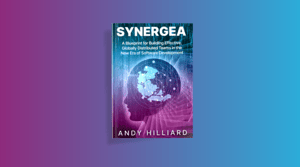Montenegro

Overview
The Republic of Montenegro, which means "Black Mountain", became a sovereign state after voting for independence in a 2006 referendum. The country of some 600,000 people features rugged mountains, medieval villages, and a narrow strip of beaches along its Adriatic coastline. Montenegro proclaimed itself a “Green State” at the 1992 Earth Summit in Rio de Janeiro and has a focus on sustainable tourism.
With a per capita GDP of $12,297 in 2024, it remains one of the poorer nations in Europe. However, the ICT sector has grown rapidly with relocation to the country of firms displaced by the war in Ukraine and many global players have an active presence in the market.
The World Bank considers the economy particularly vulnerable to external shocks, as it relies heavily on capital inflows from abroad to stimulate its growth. Politically, it is fractious. While the country is seeking to join the European Union and looks to the West, elements in the government lean towards Serbia and Russia.
The Accelerance Global Network is the most curated list of high-quality global teams ever assembled.
150
Developers
Total number of developers in our certified partner network by country
1
Certified Partner
Total number of certified partners in our global network by country.
9.5hrs
Time Travel (From NY)
Average flight time from NY to the major cities in the country.
40
Partner Innovation capability
The score reflects investment in STEM progrms and IT funding by country.
86
Partner Skill Level
Level of workforce skills and quality of education, including factors such as digital literacy, interpersonal skills, etc.
60
Partner Global Competitiveness
National productivity based on 12 core pillars, including government policy, infrastructure, economic stability, etc.
Medium
Software Outsourcing Readiness
Overall rating, based on the maturity of the tech sector, socio-political conditions, and on-the-ground research by Accelerance.
.png?width=600&height=375&name=Untitled%20design%20(40).png)
Talent Pool & Education
Technology is the fastest-growing sector of the economy; in the decade from 2012, total revenue more than doubled to reach 10% of the total GDP. The country has a pool of approximately 10,500 It professionals and 470 IT companies. Expertise is available in a variety of programming languages including Python, Java, JavaScript, C#, and PHP.
Digital transformation has been adopted as a key principle by the government, with a planned rollout of 5G aimed at reaching half of the population by the end of 2026. A Science and Technology Park on the University of Montenegro campus was founded in 2019 to support startups and technological innovation and in August 2024, the government entered a partnership with UNESCO, UNICEF and the International Labor Organization, to facilitate digital transformation of education in disadvantaged communities.
ICT-related legislation is aligned with the EU and tax incentives are available to foreign investors. Many global tech companies have a presence in the country, including Microsoft, Ericsson, Huawei, S&T, New Frontier Group (Saga), as well as important regional operators such as Telekom Serbia, ComTrade and United Group.
Language
The official language is Montenegrin, although there are many native Serbian speakers. English is widely spoken in the capital and main tourist spots and the higher educated and younger sectors of the population.

Economic Outlook
Montenegro has a small, open economy with a modest industrial base and a strong dependence on tourism. Historically, Russians and Ukrainians have accounted for 20% of international visitors. A member of NATO, it is also a candidate to join the European Union, although progress remains slow.
The economy avoided a predicted hit from the war in Ukraine, expanding by a robust 6% in 2023 thanks to a strong tourism season and private consumption. The number of tourist arrivals grew by 7% year-on-year to mid-2024, the vast majority drawn to Montenegro’s seaside resorts. Next to tourism, which accounts for 25% of GDP, the services sector is the key contributor.
The World Bank envisages steady progress, with GDP growth in the range of 2.8% to 3.4% through to 2026. Inflation eased throughout 2023 and has remained relatively stable. The current account deficit is set to narrow slightly, due to the solid performance of the tourism sector and moderating consumption.
Political Conditions
Formerly politically tied to Serbia, Montenegro became an independent state following a referendum in 2006 and joined the United Nations. In 2017, the country became a member of NATO. Deep divisions, however, continue between those who identify as Montenegrins and those who opposed independence from Serbia and those who back Russia. Although all major parties agree on establishing democracy as a long-term goal, none has a stable majority.
A turbulent period saw votes of no confidence in two successive governments in 2022. Jakov Milatovic, a pro-western candidate and co-founder of the Europe Now movement, was elected president the following year in a run-off against incumbent Milo Đukanović of the Democratic Party of Socialists, who had acted as either prime minister or president for much of the past three decades.
Milatović defeated Đukanović by a substantial margin and formed a coalition of pro-European and pro-Serb parties. Milojko Spajic, the leader of Europe Now, was elected prime minister. In August 2024, Spajic reshuffled his government, promoting leaders of pro-Serbian and pro-Russian parties. Although this was part of a deal made in 2023 to gain sufficient support to form a government, pundits see it as weakening the country’s bond with the west.
Learn more about our customer stories.
Looking for a customer story in a specific technology or industry? Discover compelling customer narratives within a specific technology or industry that resonate with your unique software development needs.


.png?width=300&name=Copy%20of%20WEBSITE%20Stop%20Chasing%20Low%20Hourly%20Rates%20Unlock%20the%20True%20Value%20of%20Offshore%20Development%20(450%20x%20253%20px).png)



